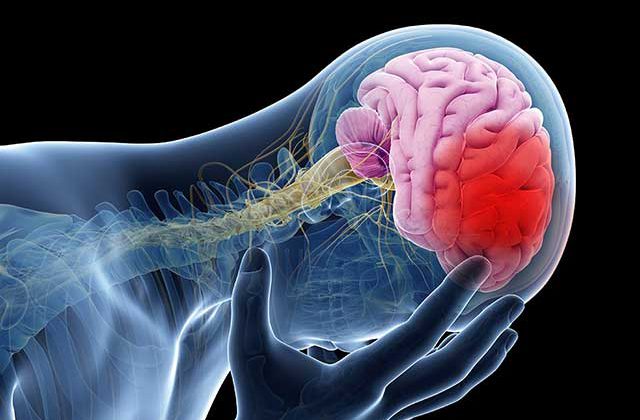Inflammation in Middle Age May Be Tied to Brain Shrinkage Decades Later
People who have biomarkers tied to inflammation in their blood in their 40s and 50s may have more brain shrinkage decades later than people without the biomarkers, according to a study published in the November 1, 2017, online issue of Neurology®, the medical journal of the American Academy of Neurology. The brain cell loss was found especially in areas of the brain that are affected by Alzheimer’s disease.
 “These results suggest that inflammation in mid-life may be an early contributor to the brain changes that are associated with Alzheimer’s disease and other forms of dementia,” said study author Keenan Walker, PhD, of Johns Hopkins University School of Medicine in Baltimore, Md. “Because the processes that lead to brain cell loss begin decades before people start showing any symptoms, it is vital that we figure out how these processes that happen in middle age affect people many years later.”
“These results suggest that inflammation in mid-life may be an early contributor to the brain changes that are associated with Alzheimer’s disease and other forms of dementia,” said study author Keenan Walker, PhD, of Johns Hopkins University School of Medicine in Baltimore, Md. “Because the processes that lead to brain cell loss begin decades before people start showing any symptoms, it is vital that we figure out how these processes that happen in middle age affect people many years later.”
People with the inflammation markers and brain shrinkage also had lower scores on average on a memory test.
For the study, researchers tested the levels of five markers of inflammation in the blood, including the white blood cell count, in 1,633 people with an average age of 53. An average of 24 years later, the participants took a memory test and had brain scans to measure the volume of several areas of the brain.
The participants were divided into three groups based on how many elevated levels of inflammation they had among the five biomarkers.
Compared to the people with no elevated levels, people with elevated levels on three or more biomarkers had on average 5 percent lower volume in the hippocampus and other areas of the brain associated with Alzheimer’s disease.
Walker said that the effect of one standard deviation increase in the overall inflammation score in mid-life on brain volume decades later was similar to the effect associated with having one copy of the apolipoprotein E (APOE) e4 gene that increases the risk of Alzheimer’s disease.
Every standard deviation increase in the inflammation score was also associated with a hippocampus volume that was 110 cubic millimeters smaller and the volume of other areas affected by Alzheimer’s disease was 532 cubic millimeters smaller.
On the memory test, where people were asked to remember a list of 10 words, the people with no elevated markers remembered an average of about 5.5 words, while those with three or more elevated markers remembered an average of about five words.
Limitations of the study include that the biomarkers were measured only once. Walker said it’s not clear whether a single measurement can adequately determine that people have chronic inflammation.
Source: American Academy of Neurology (AAN)




